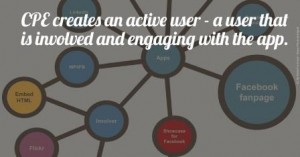Optimizely rebrands its platform as well as announcing a partnership with enterprise AI platform Writer.
Digital experience platform Optimizely has rebranded its main offering as “Optimizely One,” seeking to offer the flexibility of composability as well as the simplicity of a single workflow. It also announced a rebranding of its proprietary AI capabilities as Optimizely Opal, as well as a new partnership with generative AI content platform Writer.
Also, for the first time its core low/no-code CMS offering will be available as a SaaS product rather than just PaaS (the PaaS option will still exist). These announcements, together with a series of new products, came at this week’s Opticon conference in San Diego.
Optimizely One. Optimizely One is both fully composable and fully connected. Composability offers the possibility of integrating solutions from third-party vendors into the platform. Optimizely’s solutions are offered à la carte. Its core solutions include its CMS and its Content Management Platform (CMP), but customers can add, for example, third-party digital asset management instead of using Optimizely’s DAM.
Nevertheless the Optimizely components within the platform are fully connected, creating the possibility of a unified workflow.
Opal and Writer. As admitted in a release, Opal is really a “new identity” for long-established Optimizely capabilities including AI-powered content and product recommendations and personalization. Additionally, it refers to newer genAI capabilities for creating content within the CMP.
The bigger news is the partnership with Writer that will bring the AI-based content creation platform’s capabilities directly into Optimizely workflows. Writer identifies itself as an enterprise-grade genAI platform focused on B2B needs, with a proprietary large language model (as well as access to others in the ecosystem) and significant security and compliance features. It offers, for example, compliance with HIPAA as well as with consumer financial regulations.
Why we care. At first sight, it might appear that calling a platform that is still composable “Optimizely One” — and presenting flexibility and simplicity as if they weren’t opposed concepts in this context — might just be a question of branding. That would not be entirely fair.
The rebranding signals, rather, if not the end of a journey, then a significant milestone. In 2021 and 2022, Optimizely, along with a number of major competitors — notably Sitecore — made a significant number of acquisitions. Among Optimizely’s acquisitions, for example, was Welcome (formerly NewsCred), now the CMP.
The acquired solutions, as well as core components like the CMS, are now stitched together so that users can move easily between them (as shown in a series of Opticon mainstage demos). While customers can still integrate non-Optimizely solutions with the platform, to the extent they are using the native solutions they are now using “One” connected platform.
Additional product announcements. Optimizely’s other announcements at Opticon included:
- Experiment Collaboration. A dashboard offering full, cross-organization visibility into the use of Optimizely’s experimentation capabilities. Optimizely itself frequently has more than 50 experiments running at any one time. This is aimed at offering transparency into the hypotheses being tested and the progress being made.
- Graph. A central hub for aggregating content from any source and delivering it to any channel.
- Visual experience builder. A no-code, drag-and-drop tool to actually build visual experiences, not just preview them.
Those customers that opt for the new SaaS-based CMS will benefit from automatic upgrades rather than the periodic release of new versions.
The post Introducing Optimizely One: An OS for marketing appeared first on MarTech.
MarTech(8)










